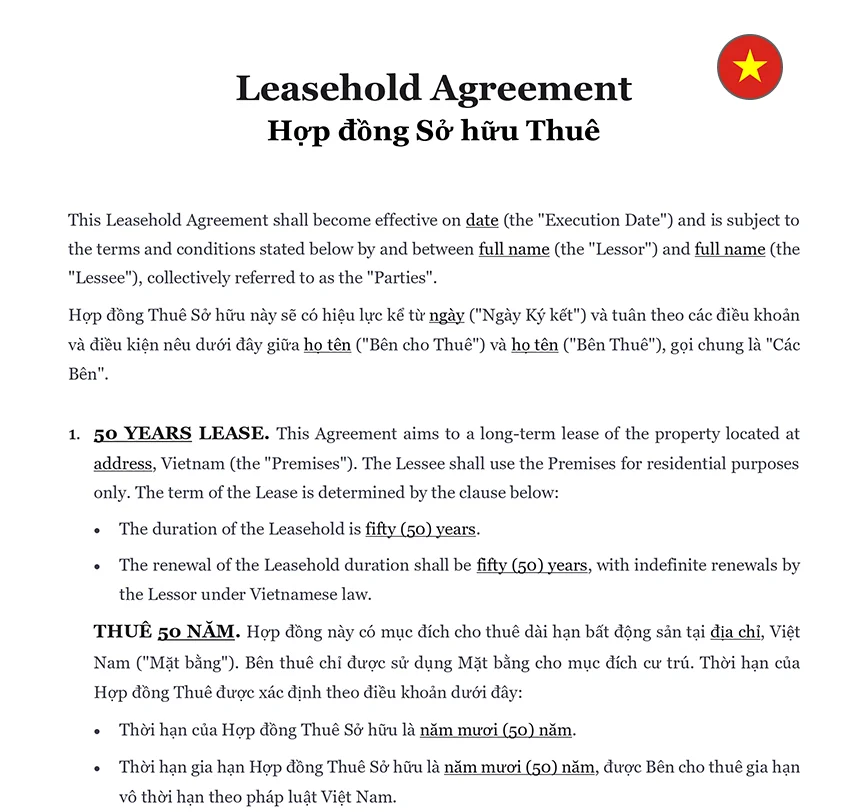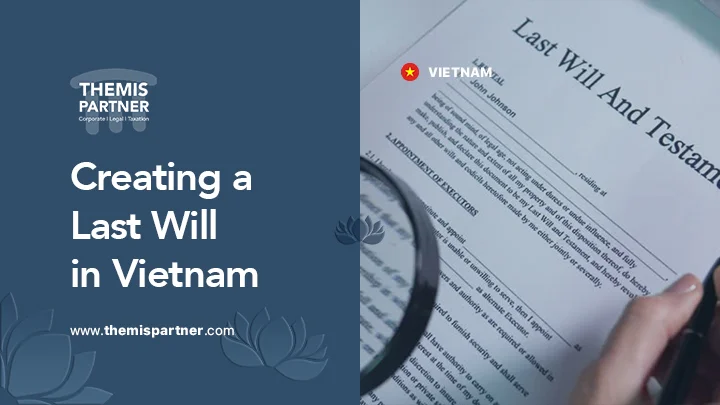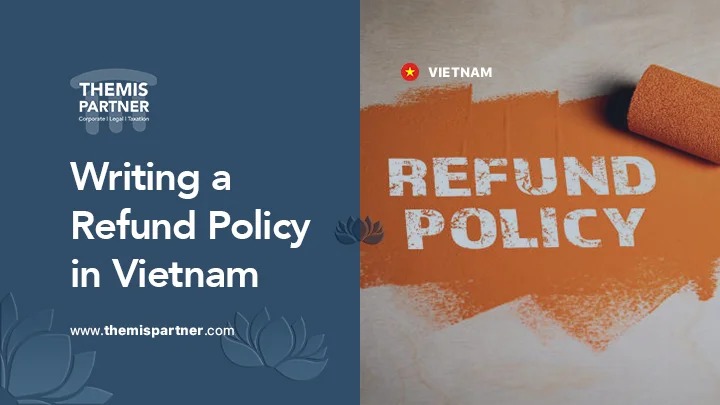What is a Long-Term Rental Contract?
A long-term rental contract is a legally binding agreement between a landlord and a tenant for a rental period typically exceeding one year. This contract outlines the terms and conditions of the tenancy, including rent payments, duration, and responsibilities of both parties. Properly drafted long-term rental contracts ensure clarity and legal protection for both landlords and tenants. Long-term rental contracts are crucial in Vietnam as they provide stability for tenants and ensure landlords have a consistent income stream. The specifics of these contracts can vary widely, making it essential to understand each clause thoroughly. For drafting detailed contracts, use our Long-Term Rental Agreement Template.
Key Components of a Leasehold Agreement
A leasehold agreement is a type of long-term rental contract that grants the tenant the right to use the property for a specified period. Key components include:
Lease Duration: Clearly defined start and end dates are crucial. This period typically ranges from one to five years, depending on the agreement. Understanding the lease duration helps tenants plan their stay and manage their commitments.
ℹ️ To avoid common mistakes in your rental contract, read How to Avoid Common Rental Contract Mistakes in Vietnam.
Rent Amount: The specified monthly or yearly rent should be transparent and agreed upon by both parties. This amount should include any additional costs like maintenance fees or service charges to avoid surprises.
Payment Terms: Due dates and acceptable payment methods must be clearly stated. This includes specifying whether payments can be made via bank transfer, cash, or other methods. Clear payment terms help avoid late fees and misunderstandings.
Maintenance Responsibilities: Details on who is responsible for repairs and upkeep are essential. Typically, the landlord is responsible for major repairs, while the tenant handles minor maintenance. Clear guidelines prevent disputes over repair responsibilities.
Termination Clauses: Conditions under which the lease can be terminated early should be explicitly outlined. This includes notice periods and any penalties for early termination, ensuring both parties understand their rights and obligations. For handling terminations, explore Legal Steps to Terminate a Lease in Vietnam.
Renewal Terms: Options for extending the lease should be clearly defined. This might include automatic renewal or a required notice period for renewal discussions. Knowing these terms helps both parties plan for the future.
- Remarks:
For any modifications to your existing rental agreement, ensure clarity and legal compliance by using our Lease Amendment template.
Rights and Responsibilities of Tenants in Long-Term Rentals
Tenants in long-term rentals have specific rights and responsibilities that must be clearly understood to ensure a harmonious living arrangement. These include:
1. Right to Privacy: Tenants have the right to privacy and peaceful enjoyment of the property. Landlords must give prior notice before entering the property, respecting the tenant’s space and personal life.
2. Right to a Habitable Home: Landlords must ensure the property is safe and habitable, providing necessary amenities like water, electricity, and proper sanitation. This right ensures that tenants live in a comfortable and safe environment.
3. Responsibility for Rent Payment: Tenants must pay rent on time as stipulated in the contract. Late payments can lead to penalties or eviction. Ensuring timely payments is crucial for maintaining a good relationship with the landlord.
4. Maintenance Obligations: Tenants must keep the property in good condition and report any necessary repairs. This includes regular cleaning and minor repairs, ensuring the property remains in good condition throughout the tenancy.
Landlord Obligations in Long-Term Rental Agreements
Landlords also have key obligations to uphold, which are essential for maintaining a positive landlord-tenant relationship:
1. Providing a Safe Environment
Landlords must ensure the property meets health and safety standards, addressing any hazards that could harm tenants. This includes regular inspections and prompt repairs of any safety issues.
ℹ️ Documenting the property condition at the beginning and end of the lease with a Rental Inspection Report can help.
2. Performing Repairs
Landlords are responsible for timely repairs, especially those affecting habitability. This ensures tenants live in a well-maintained environment and helps prevent further damage to the property.
3. Respecting Privacy
Landlords must give proper notice before entering the property, usually 24 hours in advance. This respect for privacy helps build trust and ensures tenants feel secure in their home.
Security Deposits and Their Regulations
Security deposits are a common feature in long-term rental contracts and come with specific regulations to protect both parties. These regulations typically include:
| ➤ Amount: Usually one to three months' rent. This amount provides security for the landlord against potential damages or unpaid rent. |
| ➤ Usage: The deposit can be used for unpaid rent or property damage. Landlords must provide an itemized list of any deductions made from the deposit. |
| ➤ Return Conditions: Clear conditions for returning the deposit at lease end should be specified. Typically, the deposit is returned if the property is in good condition and all rent is paid. |
| ➤ Deductions: An itemized list of permissible deductions from the deposit, such as for repairs or unpaid utilities, should be included. This transparency helps prevent disputes. |











